Reposted from Emma Munster from a post from Wildlife
Moonwarriors2
Lie People Tell About Animals
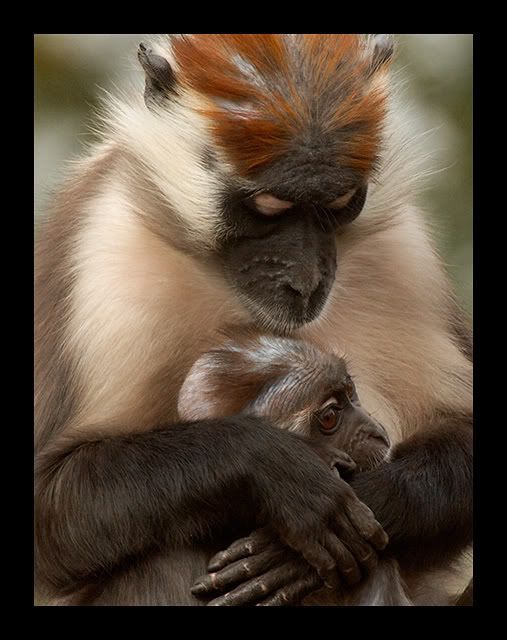
Vivisectors, hunters, butchers and farmers excuse the cruel way they treat animals by claiming (falsely) that animals don't have feelings.
This is a lie.
A big fat wicked lie which excuses a thousand cruelties.
The truth, as anyone who is capable of reading and observing will know, is that animals are sentient and exhibit many of those qualities which racists like to think of as being the preserve of the human race. (I think it is perfectly fair to describe those who claim that all good' qualities are the exclusive property of the human species as racist').
One of the absurdities of the argument about hunting which has raged for recent years in Britain has been the sight of apparently intelligent people arguing about whether or not animals which are hunted suffer physical pain and/or mental anguish when they are being pursued. How can there possibly be any doubt about this? Those who do express doubt about this are telling us a great deal about their own innate lack of understanding and compassion and their inability to learn from simple observation. If observation is not enough there is more than enough scientific evidence to show that birds, mammals, fish, reptiles and crustaceans all have nervous systems and all suffer pain.
Darwin showed that fear produces similar responses in both humans and animals. The eyes and mouth open, the heart beats rapidly, teeth chatter, muscles tremble, hairs stand on end and so on. Parrots, like human beings, turn away and cover their eyes when confronted with a sight which overwhelms them. Young elephants who have seen their families killed by poachers wake up screaming in the night. Elephants who are suddenly separated from their social group may die suddenly of broken heart syndrome'. Apes may fall down and faint when suddenly coming across a snake. If a man shouts at a dog he will cower and back away in fear.
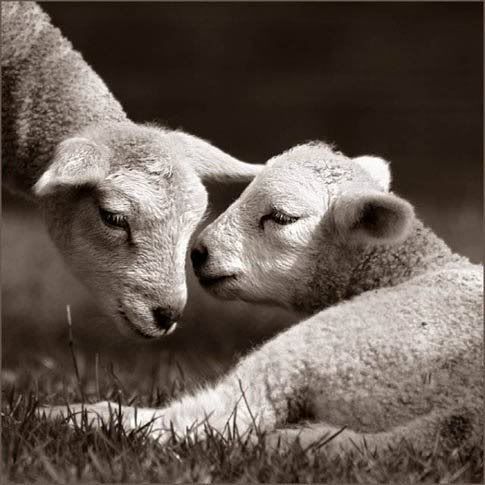
Animal abusers sometimes assume that it is only humans who can communicate with one another. And yet bees can communicate the direction, distance and value of pollen sources quite a distance away. Animal abusers generally dismiss animal noises as simply that (noises) but scientists who have taken the time and trouble to listen carefully to the extraordinary variety of noises made by whales have found that there are patterns of what can only be described as speech which are repeated from one year to another.
It is generally assumed that parrots merely repeat words they have heard without understanding what they mean. This is not true. Masson and McCarthy report how when psychologist Irene Pepperberg left her parrot at the vet's surgery for an operation the parrot, whose name was Alex, called out: Come here. I love you. I'm sorry. I want to go back.' The parrot clearly thought that he was being punished for some crime he had committed. Another parrot, in New Jersey, US saved the life of its owner by calling for help. Murder! Help! Come quick!' cried the parrot. When neighbours ran to the scene of the crime they found the parrot's owner lying on the floor, unconscious, bleeding from a gash in his neck. The doctor who treated the man said that without the parrot's cries he would have died. The same parrot woke his owner and neighbours when a fire started in the house next door.
How arrogant the animal abusers are to assume that human beings are the only species capable of communicating with one another, and of formulating a formal system of language. Vivisectors frequently laugh at the animals they torture and abuse. The concentration camp guards in the Second World War laughed at their victims and called them lice and rats. The vivisectors talk about sending a mouse to college' when they want to raise funds for experiments.
We have the power to do what we will with creatures of other species. But no one has given us the right.
Animals feel complex emotions. But the animal abusers claim that because animals do not satisfy our human criteria for intelligence then animals do not deserve any sympathy or understanding. It is but one step from this to arguing that unintelligent humans can be used for experiments.
Human beings who have taken the time to do so have found that they have been able to communicate well with chimpanzees and numerous other animals. Primates will often strive to make the peace after a hostile encounter. And uninvolved primates may help begin and cement the reconciliation........... And yet vivisectors are given legal licences allowing them to do horrific things to these animals. Who gave human beings the right to hand out licences to torture?

Capable Of Love
Animals, like people, are capable of loving their partner, their families, their children, their leaders, their teachers, their friends and others who are important to them. An ape will show exactly the same signs of love and affection when dealing with her baby as a human mother will when dealing with her baby. Both will look longingly, tickle and play with their baby. Both feed their young, wash them, risk their lives for them and put up with their noise and unruly behaviour.
Anyone who doubts that animals love their young should stand outside a farm yard when a calf has been taken away from a cow and listen to the heart breaking cries of anguish which result. Who knows what inner anguish accompanies those cries from a creature who does not normally vocalise in the same way that other animals do.
Even fish will risk their lives to protect their young. In his seminal work The Universal Kinship' (first published in 1906 and now largely forgotten) J. Howard Moore described how he put his hand into a pond near the nest of a perch. The courageous fish guarding the nest chased Moore's hand away several times and when Moore's hand was not removed quickly enough would nip it vigorously several times.
Lewis Gompertz, who lived from 1779 to 1861 and was a potent champion of the rights of blacks, women and the poor (and, indeed, all oppressed human beings) was also a powerful champion of animals and was a founder of the Royal Society for the Prevention of Cruelty to Animals. (His credibility is, I feel, dramatically enhanced by the knowledge that quite early on he was forced out of the society). In his book Moral Inquiries On the Situation Of Man And Of Brutes' Gompertz wrote: From some birds we may learn real constancy in conjugal affection, though in most instances their contracts only last for one season, but how strict do they keep this. They have no laws, no parchments, no parsons, no fear to injuring their characters, not even their own words to break in being untrue to each other: but their virtue is their laws, their parchments, their parsons, and the reputation; their deeds are their acts, their acts - their deeds: and from their own breasts do they honestly tear down to line the beds of their legitimate offspring.'
Gompertz described an incident illustrating the wisdom of blackbirds. I observed a male blackbird flying about in an extreme state of agitation,' he wrote. And on my going to discover the cause of it, the bird retreated from me as I followed it, till it stopped at a nest containing a female bird sitting upon her eggs, near which there was a cat: in consequence of this I removed the cat, and the bird became quiet. After that, whenever the cat was about the place, the blackbird would come near my window, and would in the same manner direct me to some sport where the cat happened to be stationed.'
Gompertz also wrote about a male blackbird which had attacked a cat which had caught its female partner and wrote about three true incidents which illustrated animal kindness and wisdom. The first concerned two goats which had met one another on a narrow path between two precipices. There was no room for the two goats to turn or pass and so one of the goats lay down, allowing the other to walk over it. The second incident involved a horse who had been hurt by a nail when he had been shod. Finding it painful to walk he had gone back to the farrier and shown him his hoof. The third incident involved a sheep dog who jumped into freezing cold water and successfully rescued another dog which had been floating on a lump of ice. I would now fain ask,' wrote Gompertz, if all this does not show reason and virtue?'
J. Howard Moore described how monkeys may adopt the orphans of deceased members of their tribe and how two crows fed a third crow which was wounded. The wound was several weeks old and the two crows had clearly been playing good Samaritans' for that time.
Darwin wrote about a blind pelican which was fed with fish which were brought to it by pelican friends who normally lived thirty miles away. Strong males in a herd of vicunas will lag behind to protect the weaker and slower members of their herd from possible predators.
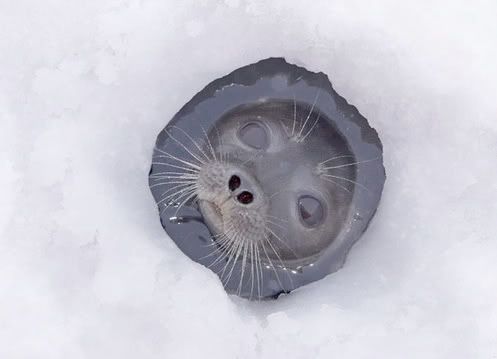
Many creatures have memories which humans might envy. Ants retrace their steps after long journeys and can recognise friends after months of separation. When a limpet has finished roaming it will return to the exact spot on the same rock where it had been settled previously. Birds fly back year after year to the same nesting spots - to within the inch. Fish, too, return to the same stretch of water to hatch their young. Horses used in delivery routes frequently know exactly where and when to stop - and for how long. Squirrels who have buried nuts months before can find them without hesitating.
J. Howard Moore reported that an elephant obeyed all his old words of command on being recaptured after fifteen years of freedom in the jungle and a lion recognised its keeper after seven years of separation. A snake which was carried a hundred miles away from home managed to find its way back.
There is plenty of evidence, too, to show that many creatures other than human beings have powerful imaginations. Spiders will hold down the edges of their webs with stones to steady them during gales which have not yet started. Does this show an ability to predict the weather or imagination? Cats, dogs and horses and many other creatures dream. Parrots talk in their sleep.
Horses frequently stampede because they are frightened by objects (such as large rocks or posts) which are no threat to them. This must show a sense of imagination because the horse, like a child, has created a terror out of nothing.
A cat playing with a ball of wool is imagining that it is playing with its prey.
We always tend to think the worst of animals (and other creatures). We assume that they are stupid and our interpretation of their behaviour is based upon that ill-founded prejudice. It is, for example, generally assumed that the ostrich sticks its head in the sand in the assumption that when it cannot see the rest of the world, the rest of the world cannot see it. But where is the evidence for this theory? Could it not be equally possible that the ostrich sticks its head in the sand because it cannot bear what there is to view in the world around it? When a human being covers his or her eyes to avoid looking at a horrific accident we do not say that they believe that they can't be seen.

Love
Before slavery was abolished black people who fell in love were regarded as enjoying simple animal lust' as a result of animal attraction'. Who on earth (or, indeed, in heaven) gave us the right to make such judgements about black people or animals? When black people formed life long pairs this was dismissed as nothing more than an a response to an instinct'. The same thing is said about animals (with just as little evidence to support it). Who gives humans the right to argue that animals do not show emotions? Animal abusers sneer and say that animals which seem to show love are merely acting according instinct. But who says? Where is the evidence for this claim? Why do animal abusers have the right to make statements with no evidence whatsoever in support? Why don't the animal abusers follow a consistent line and argue that human mothers who show love for their human babies are merely following their instincts? (Of course, people change their views when it suits them. Even vivisectors and hunters, who claim that animals have no feelings, will often claim to be loved by their companion dogs and cats.)
There are numerous well authenticated stories of animals risking their lives to save their loved ones. And animals will put their own safety second to protect their friends. One herd of elephants was seen always to travel unusually slowly. Observers noted that the herd travelled slowly so as not to leave behind an elephant who had not fully recovered from a broken leg. Another herd travelled slowly to accommodate a mother who was carrying her dead calf with her. When the herd stopped to eat or drink the mother would put her dead calf down. When they started travelling she would pick up the dead calf. The rest of the herd were accommodating her in her time of grief. Gorillas too have been seen to travel slowly if one of their number is injured and unable to move quickly. Remember this unquestioning generosity next time you are trapped in the midst of a crowd of humans travelling by car, train or aeroplane.
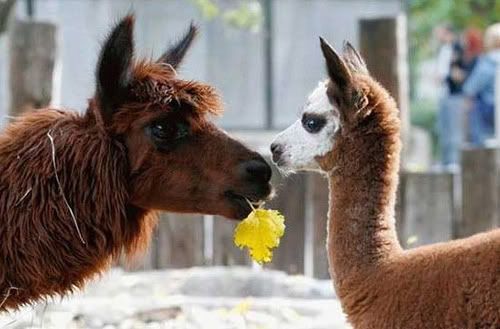
Animals don't just show love; they frequently exhibit behaviour that can only be described as altruistic. Old lionesses who have lost their teeth and can no longer bear young are, theoretically, of no value to the rest of the pride. But the younger lions will share their kills with them. Young, agile chimpanzees will climb trees to fetch fruit for their older relatives. Foxes have been observed bringing food to adult, injured foxes. When one fox was injured by a mowing machine and taken to a vet by a human observer the fox's sister took food to the spot where the injured fox had lain. The good Samaritan sister fox made the whimpering sound that foxes use when summoning cubs to eat (even though she had no cubs).
Animals have been known to give food to hungry humans. Koko, the gorilla who learned to communicate with humans through sign language, gave medical advice to a human woman who complained of indigestion. Koko told the woman to drink orange juice. When the human revisited ten days later and offered Koko a drink of orange juice Koko would not accept the drink until assured that the woman felt better. Whales have been observed to ask for and receive help from other whales. J. Howard Moore describes how crabs struggled for some time to turn over another crustacean which had fallen onto its back. When the crabs couldn't manage by themselves they went and fetched two other crabs to help them. A gander who acted as a guardian to his blind partner would take her neck gently in his mouth and lead her to the water when she wanted to swim. Afterwards he would lead her home in the same manner. When goslings were hatched the gander, realising that the mother would not be able to cope, looked after them himself. Pigs will rush to defend one of their number who is being attacked. When wild geese are feeding one will act as sentinel - never taking a grain of corn while on duty. When the sentinel geese has been on watch for a while it pecks at a nearby goose and hands over the responsibility for guarding the group. When swans dive there is usually one which stays above the water to watch out for danger. Time and time again dogs have pined and died on being separated from their masters or mistresses. Animals can suffer, they can communicate and they can care.
A Border collie woke a young mother from a deep sleep and led her to her baby's cot. The baby was choking on mucus and had stopped breathing. What is any of this but compassion? How can animal abusers regard themselves as sentient when they mistreat animals who can feel this way?
Konrad Lorenz described the behaviour of a gander called Ado when his mate Susanne-......................Elisabeth was killed by a fox. Ado stood by Susanne-........................................................Elisabeth's body in mourning. He hung his head and his body was hunched. He didn't bother to defend himself when attacked by strange geese. How would the animal abusers describe such behaviour other than as sorrow born of love? There is no survival value in mourning. It can only be a manifestation of a clear emotional response - love.
A badger was seen to drag another badger which had been killed by a car off the road, along a hedge, through a gap and into a burial spot in nearby woods.
Coyotes form pairs before they become sexually active - and then stay together. One observer watched a female coyote licking her partner's face after they had made love. They then curled up and went to sleep. Geese, swans and mandarin ducks have all been described as enjoying long-term relationships.
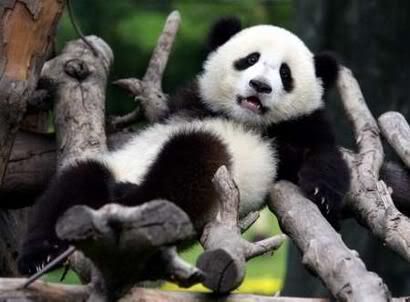
Animals have also been known to show vanity, self-..................................................................................................................................................................................................................................................consciousness, embarrassment and other allegedly exclusively human emotions. Masson and McCarthy reported that chimpanzees have been observed using a TV video monitor to watch themselves make faces - the chimpanzees were able to distinguish between a live image and taped image by testing to see if their actions were duplicated on the screen. Chimpanzees have even managed to use a video monitor to apply make-up to themselves (this is a difficult trick to learn for humans). One chimpanzee has been reported to have used a video camera and monitor to look down his throat - using a flashlight to help the process.
As for vanity: .males (baboons) with worn or broken teeth yawn less than male baboons with teeth in good condition - unless there are no other males around in which case they yawn just as often,' wrote Masson and McCarthy.
One gorilla who had a number of toy dolls used sign language to send kisses to her favourite puppets and dolls. But every time she realised that she was being watched she stopped playing.
When a bottlenose porpoise accidentally bit her trainer's hand she became hideously embarrassed', went to the bottom of her tank, with her snout in a corner, and wouldn't come out until the trainer made it clear that she wasn't cross.
Jane Goodall has reported that wild chimpanzees can show embarrassment and shame and may, also, show off to other animals whom they want to impress. (One chimpanzee who fell while showing off was clearly embarrassed).
Many people who live with cats will have noticed that if the cat falls off a piece of furniture it will appear embarrassed - often beginning to wash itself as though making it clear that the embarrassing incident didn't really happen at all. Elephant keepers report that when elephants are laughed at they will respond by filling their trunks with water and spraying the mockers. And many dog owners have reported that their animals have made it clear that they know that they have done wrong. For example a dog which feels it has done something wrong may go into a submissive position before the owner knows that the animal has done something bad'.

Artistic Animals
There are many myths about animals and the animal abusers tell many lies in an attempt to belittle the skills that animals have. It is, for example, sometimes said by animal abusers that animals cannot see in colour. This is a nonsense. Four sheep who lived with me, who were accustomed to being fed from an orange bucket would come running across a field if they saw the orange bucket. When I tried using a blue bucket they showed absolutely no interest. The colour was the only significant difference between the buckets. A chimpanzee has been observed staring at a beautiful sunset for fifteen minutes. Monkeys prefer looking at pictures of monkeys to pictures of people and prefer looking at animated cartoons rather than at still pictures.
Gerald Durrell wrote about a pigeon who listened quietly to most music but who would stamp backwards and forwards when marches were being played and would twist and bow, cooing softly, when waltzes were played. Dogs will alter their howling according to the other sounds they hear. One gorilla enjoyed the singing of Luciano Pavarotti so much that he would refuse to go out of doors when a Pavarotti concert was being shown on television. Animal abusers have for years dismissed bird song as merely mating calls. Who can say that birds do not sing to give themselves and others pleasure?
An Indian elephant in a zoo used to split an apple into two and then rub the two halves onto the hay to flavour it.
Numerous apes have painted or drawn identifiable objects while in captivity. And when a young Indian elephant was reported to have made numerous drawings (which were highly commended by artists who did not know that the artist was an animal) other zoo keepers reported that their elephants often scribbled on the ground with sticks or stones. When one Asian elephant got extra attention because of her paintings nearby African elephants used the ends of logs to draw on the walls of their enclosure.
The animal abusers invariably try to think the worst when considering animal behaviour. When a bird takes bright objects to decorate its nest the animal abusers will claim that the bird doesn't really know what it is doing. When a human being collects bird feathers to decorate a room they are said to be showing artistic tendencies.
Vivisectors, and others who abuse animals, are blind to all this because they want to be blind to it. Animal abuse is driven by economic need and there is no place for sentiment and compassion when money is at stake. Vivisectors tear animals away from their partners, their friends and their relatives with no regard for their feelings - or for the feelings of the animals they have left behind.
When animals are born in zoos the keepers and jailers claim that this is evidence that the animals are happy. Would they also claim that the fact that babies were born in concentration camps is evidence that concentration camp inmates were happy?
What trickery the animal abusers use in their sordid attempts to excuse their brutality. Animals in captivity often die far younger than they would die if they were allowed to roam free. At one oceanarium a famous pilot whale was actually thirteen different pilot whales.
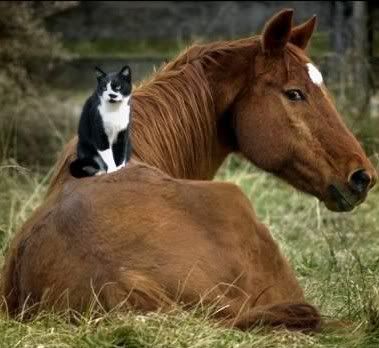
Many other species - from families as varied as ants and dolphins - are smarter, kinder and better at creating societies which work than are human beings.
A survey showed that almost half of all the women in one US city had been raped or subjected to attempted rape at least once in their lives. Just think of the torture performed by humans on other humans.
Animal abusers will leap on every example they can find of apparent bad behaviour' by animals and use that example to draw far reaching conclusions about all animals. They ignore the fact that the bad behaviour' to which they refer may well have been triggered by human aggression.
Do the animal abusers who leap upon one example of bad animal behaviour as significant also suggest that because one human murders, tortures or rapes we must all be judged by that individual? Are all human beings to be judged to be as barbaric and evil as vivisectors?
As I have described in my book Why Animal Experiments Must Stop experimenters have deliberately planned and executed experiments designed to make animals feel depressed. When they have succeeded in making animals depressed they have written up their experiments as though proud of themselves for having succeeded in their evil aims. What possible purpose can there be in creating depression when there is already so much of it in the world? (And, incidentally, does not the ability of the experimental scientists to make' animals feel depressed provide yet more proof that animals are sentient creatures?)

Enjoying The Suffering
No animal, other than the human animal, has ever deliberately performed experiments on another. No one animal, other than the human animal, has ever deliberately tortured another being.
Human beings are the only species who abuse one another (and members of other species) for pleasure. Human beings are the only species who torture. Only human beings chase and attack living creatures for fun - and for the pleasure of watching the suffering.
Contrary to myth, cats do not play' with animals for fun - it is part of their learning and training process. Cats like to chase, to catch and then to kill. They kill so that they can eat and they need to practise their chasing skills. It is, however, important to remember that a cat or a kitten will be just as happy chasing a ball of paper or a piece of string (particularly if it is manipulated in an effective and lifelike manner). This shows that the cat doesn't chase and catch because it enjoys the suffering which is produced - how much fun' could there possibly be in torturing' a ball of paper or a piece of string?
Foxes are often criticised (by those who hunt them) on the grounds that they sometimes kill large numbers of hens. The implication is that the fox kills for pleasure. The truth, however, is that, like other predators who may kill more than they can eat when they have the opportunity, foxes store the food they have killed.
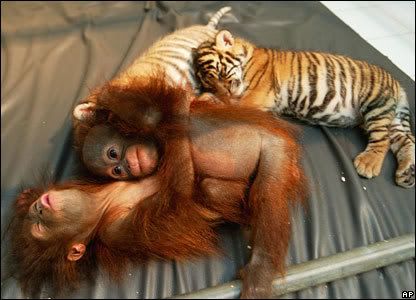
In their excellent book When Elephants Weep Jeffrey Masson and Susan McCarthy report how a man called John Teal, who was working with endangered musk oxen, was at first alarmed when some dogs approached and the musk oxen snorted, stamped and thundered towards him. Before Mr Teal could move to escape, the oxen formed a defensive ring around him and lowered their horns at the dogs. It turned out that the musk oxen were protecting their new human friend in exactly the same way that they would protect their calves from predators.
Animals have even been reported to have pets of their own. A chimpanzee who was thought to be lonely was given a kitten as a companion. The chimpanzee groomed the kitten, carried it about with her and protected it from harm. A gorilla called Koko had a kitten companion which she herself named All Ball. An elephant was seen to routinely put aside some grain for a mouse to eat. Race horses who have had goat companions have failed to run as expected when separated from their friends.

Human beings are not the only animals to have a sense of humour and fun and to enjoy playing.
Masson and McCarthy, in When Elephants Weep, report that foxes will tease hyenas by going close to them and then running away. Ravens tease peregrine falcons by flying close and closer to them. Grebes tweak the tails of dignified swans and then dive to escape. I have watched lambs play their own version of King of the Castle' (and many other games customarily played by children). A monkey has been seen to pass his hand behind a second monkey so that he could tweak the tail of a third monkey. When the third monkey remonstrated with the second monkey the first monkey, the practical joker, was clearly enjoying himself.
When scientists examined the dung of lions the lions dug up the latrine the humans had been using - and inspected the contents. Ants, fish, birds, cats, dogs, sheep, horses, monkeys, porpoises and many other creatures play.

Animals frequently make friends across the species barriers. There is much evidence showing that animals have helped animals belonging to a different species. Why do we have to be the only species to abuse all other creatures? Is our cruelty to other creatures really to be regarded as a sign of our wisdom, superiority and civilisation? What arrogance we show in the way we treat animals. Where is our humility and sense of respect? Animals have passionate relationships with one another, they exhibit clear signs of love, they develop social lives which are every bit as complex as our own. By what right do we treat them with such contempt? Those who torture and kill animals have to claim that animals have no feelings - otherwise they would be admitting that they themselves have acted cruelly.
But how they can continue to do this when there is so much scientific evidence to prove that they are utterly wrong? Those who torture and kill insist on being allowed to continue to torture and kill because they know that if they stop they will have to admit that they have spent their lives in the barbaric abuse of sensitive creatures.
No one with any intelligence or sensitivity of their own can possibly doubt that animals are capable of suffering. Animal experimenters and abattoir workers degrade us all and diminish our worth as a species.

The animal abusers will frequently argue that since human beings can speak foreign languages and do algebraic equations they are inevitably better' than animals. What nonsense this is. Does this mean that humans who cannot speak foreign languages or do algebraic equations are not entitled to be treated with respect? And who decides which are the skills deserving of respect? If we decide that the ability to fly, run at 30 mph, see in the dark or swim under water for long distances are the skills worthy of respect there wouldn't be many human beings qualifying for respect.
Cats can find their way home without map or compass when abandoned hundreds of miles away in strange territory. How many human beings could do the same? How many humans could spin a web or build a honeycomb?
We owe it to animals to treat them with respect and, at the very least, to leave them alone to live their lives on this earth free from our harm. Darwin wrote that there is no fundamental difference between man and the higher mammals in their mental faculties'. He also argued that the senses and intuition, the various emotions and faculties, such as love, memory, attention, curiosity, imitation, reason etc of which man boasts, may be found in an incipient, or sometimes even well-developed condition in the lower' animals.'
Turtles have been observed learning a route from one place to another. To begin with they make lots of mistakes, go down cul de sacs and miss short cuts. But after a while they can reduce their journey time dramatically. Birds, which might normally be alarmed by the slightest noise, learn to ignore the noise of trains and cars when they build their nests near to railway lines or busy roads. Even oysters are capable of learning. Oysters which live in the deep sea know that they can open and shut their shells at any time without risk. But oysters which live in a tidal area learn to keep their shells closed when the tide is out - so that they don't dry out and die. This might not quite rank alongside writing a classic novel but how many human beings can write classic novels?
Animals use reason and experience to help them survive and they exhibit all of the skills which the animal abusers like to think of as being exclusively human.
All animals accumulate information which helps them to survive and live more comfortably. Moreover, they do it just as man does - by discriminating between useful and useless information and by memorising information which is of value. A puppy who has been burnt on a hot stove will keep away from it just as surely as a child who has suffered a similarly unpleasant experience. Older fish learn to be wary of lures - and become far more difficult to catch than young ones. Rats learn how to avoid traps, and birds learn where telephone wires are strung (so that they don't fly into them). Arctic seals used to live on inner ice floes to avoid the polar bears but after man arrived and proved to be a worse enemy they started living on the outer ice floes. Many animals know that they can be followed by their scent and act accordingly. A hunted deer or hare will run round in circles, double back on its own tracks, go through water and leap into the air in order to lose its pursuers.
Flocks of parrots will send an advance scouting party ahead to check out that all is well.
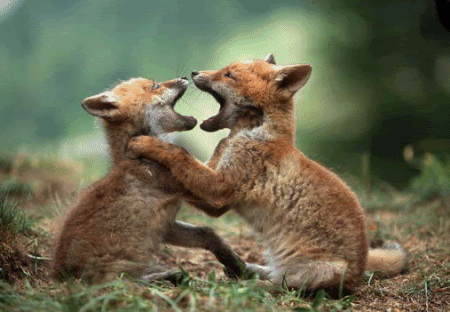
There is no doubt, too, that animals actively teach their young in order to pass on skills which the animal abusers generally regard as being nothing more than instinct'. I have watched an adult cat giving lessons to orphan kittens for which he had taken responsibility. The adult cat, teaching the art of stalking, would edge forwards and then stop and look over his shoulder to see if the kittens were following in the correct style. After the lesson had gone on for some time the kittens started playing behind the adult cat's back. They got away with it for a couple of times but on the third occasion the adult cat saw them. He reached back and gave them both a clip with an outstretched paw. The kittens weren't hurt but they paid attention again.
We tend to ignore the actions of other creatures because we don't have the time to watch what they do. But even the seemingly lowly ant has a complex and sophisticated life style. Ants can communicate with one another and recognise their friends. They will clean one another, they play, they bury their dead, they store grain, they even clear land, manure it, sow grain and harvest the grass which they have grown.
When animal abusers hear about this sort of behaviour they dismiss it as nothing more than instinct. But is it? If a Martian looked down on earth and watched us rushing about on our routine daily work would he perhaps be tempted to describe us as incapable of original thought and responding only to instinct? We may not like it but many races of non human beings have a much greater influence on their environment than we have. There are still tribes of men who live almost naked in very crude huts and whose social structures are relatively primitive when compared to, say, the beavers who cut down trees, transport them long distances, dam rivers, construct substantial homes and dig artificial waterways. Ants plant crops and build roads and tunnels. Birds build astonishingly beautiful nests from the simplest of materials.
Animal abusers claim that man is the only animal to use tools. But this simply isn't true. Even insects use tools - using small stones to pack the dirt firmly over and around their nests. Spiders use stones to keep their webs steady when the weather is stormy. Orangutans and baboons use sticks and stones as weapons. Monkeys use stones to help them crack nuts. In one zoo a monkey who had poor teeth kept (and guarded) a stone hidden in its straw for nut cracking. That monkey had a tool which it regarded as its own property. Chimpanzees drum on hollow logs with sticks. Monkeys know how to use sticks as levers. The Indian elephant will break off a leafy branch and use it to sweep away the flies. Ants know how to keep grain in a warm, moist atmosphere without the grain sprouting. The honeycomb and the bird's nest are wonders of architecture. Insect communities practise true and decent socialism.
The wonders are unending.
Animals are often curious and determined and hard working; loving and loyal and faithful. (But they do not harm themselves with tobacco and alcohol.)
We do not understand how a cat which has been taken a hundred miles away from its home (in a closed bag) can find its way back again.
But animal abusers will sew up the cat's eyes, plant electrodes into its head and subject it to unimaginable pain and suffering in their search for personal glory.
The eagle and the vulture have eyes as powerful as a telescope. The swallow will travel thousands of miles every spring, only to be trapped and shot by a Maltese hunter when it dares to land for water.
Many animals, birds and insects can predict the coming of storms far more effectively than our allegedly scientific weather forecasters.
Weight for weight the tomtit has more brain capacity than a human being.
The animal abusers claim that animals cannot reason. But it is clear that it is the animal abusers who find reason a difficult concept.
The facts are abundantly clear: animals are sentient creatures. As J.Howard Moore put it: The human species constitutes but one branch in the gigantic arbour of life.'
How cruel and vicious a species we must look to lobsters who are boiled alive, to donkeys who are beaten beyond their endurance and to all farm animals. Not all men are humane.
Man is the most drunken, selfish, bloodthirsty, miserly, greedy, hypocritical being on the planet. And yet we think ourselves so damned superior. Man is the only being on the planet to kill for the sake of killing; to dress up and turn killing into a social pastime.
The animal abusers sneer at hyenas but they do not kill for fun.
Only man gloats over the accumulation of material goods which he does not truly need.
No creature is as immoral as the animal abuser. Only man needs an army of lawyers to fight over what is right and wrong. Only man has forgotten the meaning of natural justice.
We have created a hell on this earth for other creatures. Our abuse of animals is the final savagery, the final outrage of mankind in a long history of savagery and outrage. We have colonised other species in the same way that White Northern Europeans colonised other parts of the world. Instead of learning from other animals, instead of attempting to communicate with them, we simply thrash around wickedly, abusing, torturing, tormenting and killing. We destroy the relationships of animals with one another, with their environment and with our own race. We diminish ourselves in a hundred different ways through our cruelty and our ignorance and our thoughtlessness. Man's inhumanity to man makes countless thousands mourn and his inhumanity to not-men makes the planet a ball of pain and terror,' wrote J.Howard Moore.
If man was truly the master of the universe he would use his wisdom and his power to increase the comfort and happiness of all other sentient creatures. Sadly, tragically, man has used his wisdom and his power to increase the misery of other sentient creatures. Animal abusers imprison millions of animals in cruel and heartbreaking conditions and ignore their cries of pain and distress on the grounds that animals are not sentient creatures'. What self-delusional nonsense this is.
Sheep and cattle are left out in huge fields in cold, wet weather. They shiver and search in vain for shelter because all the trees and hedgerows have been removed to make the farm more efficient. The animal abusing farmer cares not one jot for animals: he cares only for his profits.
It is quite simply just as immoral to regard animals as existing for the glorification of man as it is to regard black men or women as existing to serve white men.
Until he extends the circle of his compassion to all living things,' wrote Albert Schweizer, man will not himself find peace.'
The merciful man is kind to all creatures.
Taken from Animal Rights Human Wrongs by Vernon Coleman
Posted by Living "Cruelty-Free!"

Bulletin Reposted by Media for Animal Liberation at http://www.myspace.com/xmfalx
Media shapes views. Views shape choices. Remember to subscribe to Media for Animal Liberation's Youtube Channel at http://www.youtube.com/xmfalx and to check out longer videos at Media for Animal Liberation on Vimeo at http://vimeo.com.mediaforanimalliberation














0 Comments:
Post a Comment